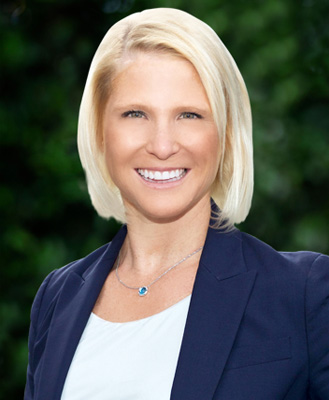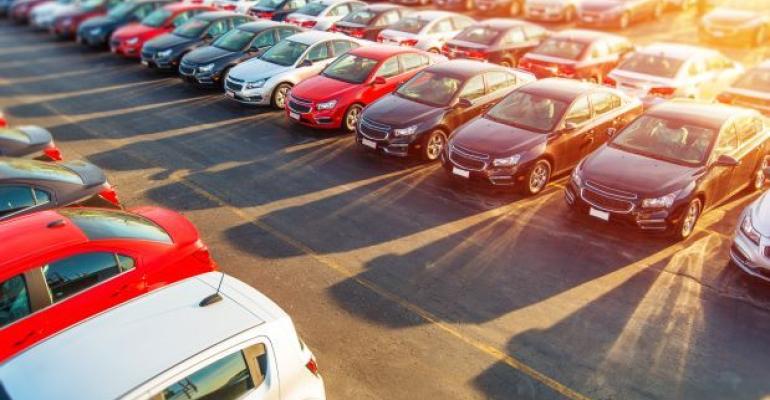It’s hard to say when, but auto dealership values could be peaking, dealership broker Erin Kerrigan says.
Kerrigan, founder and managing director-Kerrigan Advisors of Irvine, CA, says the key question is, how long can dealerships sustain record-high profits?
“Are Blue Sky Values Peaking?” is the provocative title of Kerrigan’s Sept. 13 webinar, hosted by the American International Automobile Dealers Assn. “They could be,” she says in answer to her own question after the event. “It is impossible to predict, given the continuation of record profitability.”
Blue sky is the industry term for the amount a dealership buyer pays over and above the value of a dealership’s physical assets. The better the outlook for future profits, the higher the blue sky, Kerrigan (pictured, below left) says.
 As of second-quarter 2022, the average blue sky in a dealership buy-sell was an estimated $12.1 million, up from $11 million in like-2021. That’s also almost double the average of $6.4 million in pre-pandemic 2019, according to Kerrigan Advisors.
As of second-quarter 2022, the average blue sky in a dealership buy-sell was an estimated $12.1 million, up from $11 million in like-2021. That’s also almost double the average of $6.4 million in pre-pandemic 2019, according to Kerrigan Advisors.
At the same time, buy-sell volume is at or near record levels. So far, the high price tags are not deterring buyers, brokers say. According to Kerrigan Advisors, a record 167 buy-sell transactions, including multiple-dealership transactions, were completed in the first half of 2022, up 16% vs. first-half 2021.
In a separate report, Haig Partners, Fort Lauderdale, FL, says 225 U.S. dealerships changed hands in first-half 2022, up about 3% vs. a year earlier.
The scarcity of new cars and trucks is the biggest driver of record new-vehicle profits per unit, and record dealership profits overall. Analysts blame the scarcity on the ongoing computer-chip shortage and other supply-chain issues, often tied to the COVID-19 pandemic. At the same time, consumer demand continues to outstrip supply.
Naturally, dealership sellers and dealership buyers differ on whether today’s extreme high-demand, low-supply environment can be sustained.
“From the seller perspective, it may be more sustainable than originally thought,” Kerrigan says in the webinar. That is, supply-chain challenges probably will continue for “many, many years,” she says, even if computer-chip manufacturing capacity eventually grows.
In addition, dealer groups and OEMs say both parties want to keep inventories lean, even after supply constraints ease because they recognize the financial benefits of lower supply relative to demand.
Finally, public dealer groups, for example, insist they have restructured since the pandemic’s onset to achieve more sales with fewer employees and less advertising. That’s possible in part by switching to more online sales and marketing and a more efficient, digital workflow.
Dealership buyers, on the other hand, don’t want to pay a premium for dealerships solely based on recent performance, which they feel is unsustainable.
“Some buyers are concerned they will, in fact, revert to pre-pandemic earnings,” Kerrigan says. Buyers also are more likely to predict OEMs will “weaken” and start trying to grab market share “by over-producing vehicles and incentivizing customers,” she says.
Kerrigan notes publicly traded dealership groups are finding it more expensive to pay for acquisitions with shares as share prices are down from recent highs. Some of the public groups are spending heavily on stock buybacks to boost share prices.
In addition, she says the number of multiple-rooftop, buy-sell transactions was down to 42 in the first half of 2022 vs. 51 in first-half 2021. Also, she says public group spending on acquisitions was down in the first half to about $1.1 billion, vs. $2.1 billion a year ago.
In the short run, Kerrigan says a U.S. recession may threaten dealership profits. In the longer term, threats to dealership profits include the switch to online sales, increased EV sales, the market-share threat from new manufacturers such as Tesla and Rivian, and the possibility that more brands could change to an “agency” model, where dealerships simply deliver new vehicles.
So, are blue sky values peaking? “I do not have a crystal ball that can perfectly reply to this question,” Kerrigan says.





